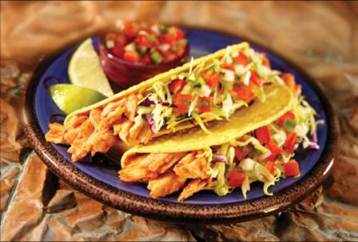Revelations in “You Are What You Eat”
04 January 2012
 Despite little change over 20 years in the healthfulness of the foods we consume, more Americans rank their diets worse. Are we more receptive today to dietary guidance?
Despite little change over 20 years in the healthfulness of the foods we consume, more Americans rank their diets worse. Are we more receptive today to dietary guidance?
The obesity trend is significantly influenced by socioeconomic factors, such as income level and race/ethnicity that create complex questions for the food industry. There remains a clear relationship between household financial resources and diet perception: People who rate their diets as “excellent” tend to come from households with greater financial resources than those who rate their diets as “poor.”
This finding is one of several in the new report, “Health on the Restaurant Menu: Foodservice Trends in the U.S.,” recently released by MarketResearch.com.
Black and Hispanic households have lower average household incomes and higher proportion of households at or below the poverty level. In poor neighborhoods across the United States, residents experience far higher rates of adult and childhood obesity than those in more affluent neighborhoods. Amid poverty, scarcity and “food insecurity” (limited or uncertain access to sufficient food), families struggle to keep food on the table. At the same time, many adults and children are overweight or obese.
But recent evidence suggests that change—at least in the form of consumer self-awareness—is under way. Historical research has shown that consumers tend to perceive that their diets are better than they are relative to widely accepted dietary guidance. During the past 20 years, however, consumers have become much less likely to rate their diets as “excellent” or “very good” in terms of healthfulness, even though the healthfulness of the American diet has undergone little change over this period. According to the report, this finding implies that consumers may be becoming more receptive to dietary guidance.
As the nation struggles to combat the growing epidemic of obesity and obesity-related diseases, public officials, health professionals and food-industry participants are providing more and more information on the nutritional content of foods to help consumers choose healthier and truly nutritious diets. If a lack of specific information contributes to excess caloric consumption, then labeling in the away-from-home market might make it easier to moderate intake. Calorie labeling might help diners make healthier choices when eating out, or it might help them realize that they should consume fewer calories at other meals throughout the day to compensate for high-calorie meals away from home.
For more information, visit http://www.marketresearch.com/Packaged-Facts-v768/Health-Restaurant-Menu-Foodservice-Trends-6501283/.
Photo: These tuna tacos made with Chicken of the Sea® Premium Light Tuna are a take on the fish-taco craze consuming the nation, and contain a whopping 14 g. of protein and only 189 calories per taco.
